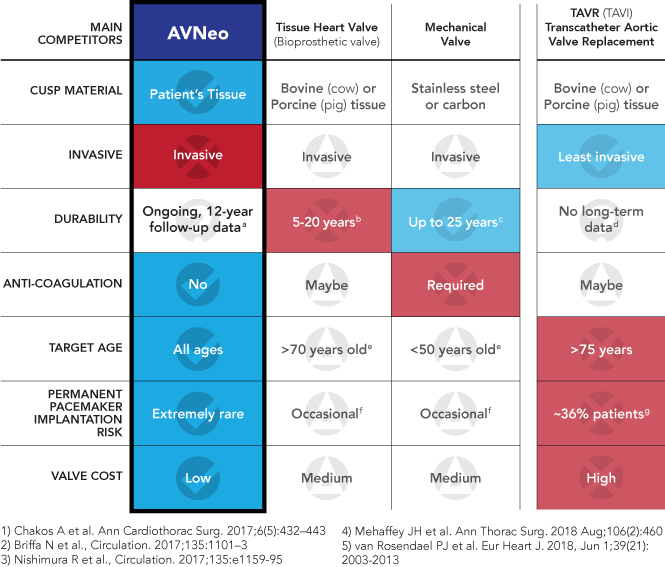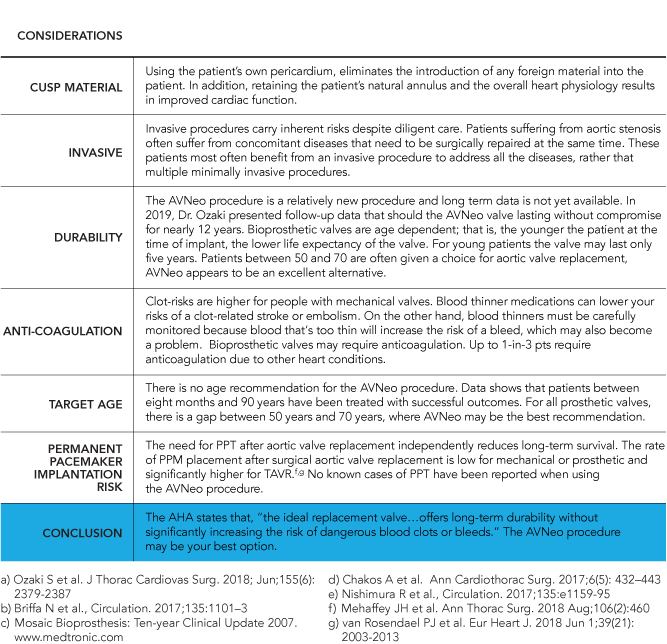Benefits of AVNeo® for Aortic Valve Replacement


OVERALL
Compared to TAVR, mechanical valves and prosthetics valves, AVNeo has various advantages. By using the patient’s own tissue to replace the aortic valve, the new valve is able to mimic the natural movement of a healthy aortic valve without causing any adverse responses. See below for the highlighted benefits of the AVNeo procedure.
Biocompatibility
The use of the patient’s own pericardium (heart membrane) mitigates the possibility of the occurrence of adverse responses to the new valve.
Proven Mid Term Durability
Durability has been proven for 12 years at present and follow-up data is still being monitored.
Long-Term Anti Coagulation Not Required
AVNeo does not require anti-coagulation drugs unlike bioprosthetic tissue heart valves and mechanical valves. As a result, the procedure does not cause any disadvantages such as reducing the Quality of Life (QOL).
Wide Target Age
The target age for AVNeo procedures ranges from pediatric patients to elderly patients. Specifically, there have been reports showing that AVNeo has been implemented on patients from under 1 year old to 90 years old.
Lower Cost for Patient and Health Care System
By using the patients own pericardium (heart membrane), the cost is substantially lowered compared to TAVR/TAVI or other prosthetic valves.
More Benefits:
“AVNeo is a promising alternative treatment for aortic valve disease. The procedure improves blood flow to the aorta, which can reduce symptoms associated with aortic valve disease and improves quality of life. What’s more, most people who undergo the procedure don’t need to take blood thinners and studies have found that the reconstructed valve used in the AVNeo procedure is durable and works well to regulate blood flow over the short and medium term. Long-term studies of the durability and effectiveness of AVNeo are ongoing.”
“No risk of your body rejecting the valve since it’s made from your own heart tissue. No long-term blood thinners are required. The valves have good blood flow dynamics.”
